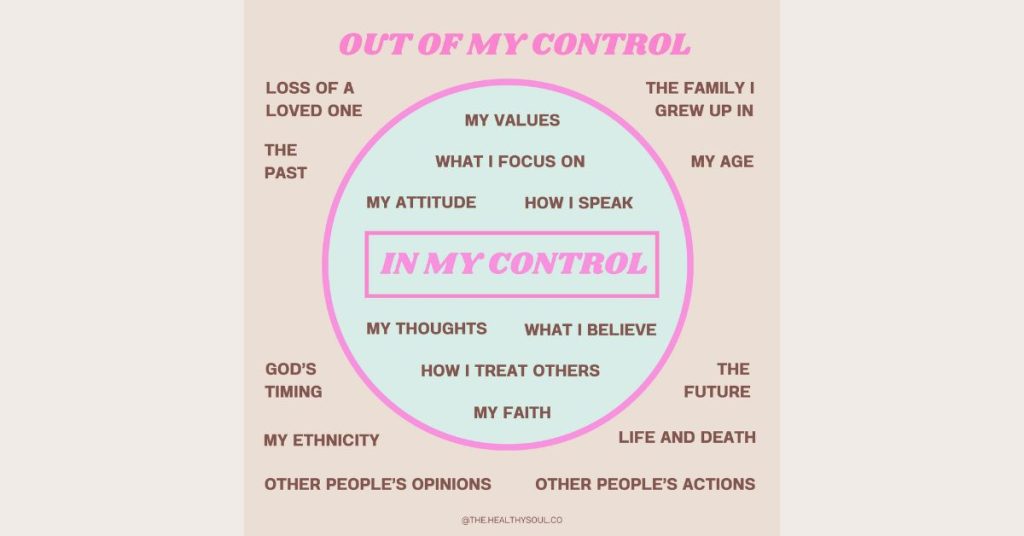By: Sabrina Peters
The circle of control is a concept that first emerged in Stephen R. Covey’s groundbreaking book, The 7 Habits of Highly Effective People.
The concept delineates between things we have control over and those we do not. By focusing our energy and attention on what lies within our control, people are empowered to focus their attention on aspects they can directly impact, such as their mindset, aspirations, and reactions. I’ve witnessed firsthand the power of embracing and applying the principles of the Circle of Control in the lives of my clients.
At the core of the circle of control, lies the understanding that we cannot control external events or other people’s actions.
Attempting to exert control over these aspects of life only leads to frustration, anxiety, and disappointment. Instead, the focus shifts to our internal world—our thoughts, emotions, and behaviours—which we have the power to influence and manage.
So, what does the Circle of Control look like?

1 – ACCEPTANCE AND LETTING GO
One of the fundamental principles of the Circle of Control is acceptance. It involves acknowledging that there are certain aspects of life that are beyond our control and learning to let go of the futile attempt to change them. For example, we cannot control the weather, traffic, or other people’s opinions of us. Dwelling on these uncontrollable factors only leads to unnecessary stress and anxiety.
2 – FOCUSING ON INTERNAL RESPONSES
Instead of fixating on external circumstances, the Circle of Control encourages us to direct our attention inward and focus on our internal responses.
While we may not be able to control what happens to us, we can control how we react to it.
This shift in perspective empowers us to take ownership of our thoughts, emotions, and behaviors, leading to greater self-awareness and emotional resilience.
3 – CULTIVATING RESILIENCE
By embracing the principles of the Circle of Control, individuals can cultivate resilience in the face of adversity. Rather than feeling powerless in the face of life’s challenges, they recognise that they have the ability to adapt and persevere in the face of adversity. This sense of empowerment enables them to bounce back from setbacks stronger than before.
So, how can you apply the circle of control to your everyday life?
1 – WORK AND CAREER
In the workplace, the Circle of Control can help you navigate office politics, demanding deadlines, and interpersonal conflicts. Rather than becoming overwhelmed by external pressures, you can focus on managing your workload, setting boundaries, and cultivating a positive work environment.
2 – RELATIONSHIPS
In personal relationships, it means focusing on their own thoughts, feelings, and behaviours rather than trying to change your partner. By practicing effective communication, empathy, and self-care, you can foster healthier and more fulfilling relationship.
3 – HEALTH AND WELL-BEING
When it comes to health and well-being, it’s a reminder that you have the power to make choices that support your physical and mental well-being. Whether it’s adopting a healthy lifestyle, seeking support from loved ones, or practicing mindfulness and self-care, you can take proactive steps to nurture your overall health.
Overall, the Circle of Control offers a powerful framework for navigating life’s challenges with grace and resilience. By embracing acceptance, focusing on internal responses, and cultivating resilience, you can reclaim your sense of agency and lead to a happier healthier life.
About the Author: Sabrina is a writer, pastor and relationships blogger. She is passionate about Jesus and changing the way people think about God, relationships and sex.
Article supplied with thanks to Sabrina Peters.
Feature image: Photo by Stephen Kraakmo on Unsplash
